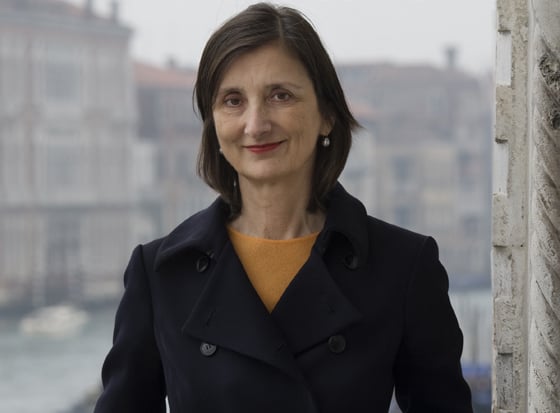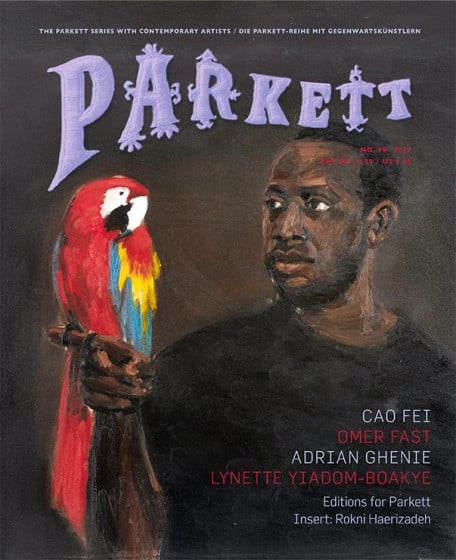Art World
‘How Can You Survive?’ Bice Curiger on Why Parkett Is Closing
The magazine featured in-depth articles on an incredible roster of artists.

The magazine featured in-depth articles on an incredible roster of artists.

Brian Boucher

“Young kids think everything has to be free,” said curator and publisher Bice Curiger in a phone interview Friday, shortly after the announcement that Parkett, the hefty, finger-on-the-pulse German-English magazine she co-founded some 99 issues ago, would cease publication. “How can you survive?”
Founded in 1984 by the foursome of Curiger, Jacqueline Burckhardt, Walter Keller, and Peter Blum, the magazine was known for both multiple essays on each of the artists it focused on and, later, innovative multiples by the same artists who were the subjects of the quarterly issues. As a measure of the respect the magazine garnered, consider that the editioned works were the subject of a show at New York’s Museum of Modern Art in 2001. Curiger proudly recalled postponing for a year an issue on Christopher Wool, so that the right authors could be recruited, and pointed out that artists like Robert Gober and Mike Kelley wrote for the magazine.
Successive editors Karen Marta, Louise Neri, Cay Sophie Rabinowitz, Ali Subotnick, Bettina Funcke, and Nikki Columbus commissioned texts on an incredibly distinguished roster of artists. There were major market stars like Jeff Koons, Richard Prince, and Gerhard Richter, as well as influential and cerebral artists like David Hammons, Rachel Harrison, and Hito Steyerl.
Curiger took a break from her work in Arles, where she is the artistic director at the Van Gogh Foundation, to talk to artnet News about the ways the magazine did and didn’t change over the years and about the reasons they called it quits.
What was the founding mission for the magazine? How did you choose what artists you focused on?
In 33 years, we went through some different epochs. At the beginning, we aimed to be a bridge between Europe and New York. It was important to make an artist like Mario Merz or Jannis Kounellis accessible to an American readership, and vice versa, when we presented Brice Marden, who was not so well-known in Europe. We offered monographic issues at the beginning because it was important to go in depth and bring a light to artists we were communicating with.
How did the magazine change over the years?
In some ways, not much. The graphic design and the formats of the articles haven’t really changed. I’m proud, because we created an instrument, a set of tools, and if you think they work, why change? It was only the artists and the content that changed.
What really changed was our perspective. We reached out to China and Japan and Africa and South America when we saw that globalization was making other centers accessible. At the beginning, as a young student, I went to New York and was fascinated with the American art scene. But then you have to open up your perspective to wider issues.
You mentioned that online reading was one of the major factors in discontinuing the magazine.
Bookshops are dying. It’s a fact. We see that every day. Bookshops were very important for Parkett, because especially the early issues were more like books than periodicals. An old issue was not like an old newspaper. If you looked up books on [Gerhard] Richter, you would find the Parkett issue. But people have become used to reading much more online, and finding things there free of charge. Every newspaper has this problem.
We introduced the editions to be less dependent on subscriptions and advertisement. That was very exciting. It was not just to make money, it was also to explore very democratic means to offer artworks with a smaller price.
But it became increasingly difficult to survive because we no longer find it possible to have a good presence in art fairs. In the past, we would publish an advertisement for the fair and get a booth in return where we could show our editions. But now fairs have commercialized every inch.

The cover of Parkett‘s current issue.
Was there any consideration of reimagining the magazine and in some way taking it online?
When we started in 1984, transatlantic telephone was very expensive and Karen and I we were writing each other letters on air mail paper about our ideas and editorial decisions. We started as a bridge between two continents, between two languages, and we invested a lot of care and energy in creating a wonderful object that you would keep on the bookshelf. We will digitize all the texts. But to create a magazine online just to go on with the model of Parkett, I don’t think it would make sense. We would have to reinvent the model somehow. But, along with issue 100, the final issue, which will appear this summer, we will organize roundtables in Berlin and New York where we’ll discuss topics like, What are the future platforms for artistic debate and artistic production? Is deep analysis going to happen on the internet or does it take another five years to develop new forms?
Speaking of new forms, what magazines do you follow these days? Are there any that have in some way taken up the mantle of what you did with Parkett?
Here in Europe you have Kaleidoscope and Mousse and a smaller one called May in France, just to mention three European ones, though of course I could name others. But it’s not like being in New York or LA, where you have more centralized discussions. Everyone has seen the same shows and knows what people are talking about, whereas in Europe it’s more dispersed. So those magazines aren’t quite comparable.
Parkett had the luxury of being slow, and we wanted to be a strong partner for artists. Up until the end, when we approached young artists, they enthusiastically wanted to work with us. Even with all the challenges, that was a comfort.